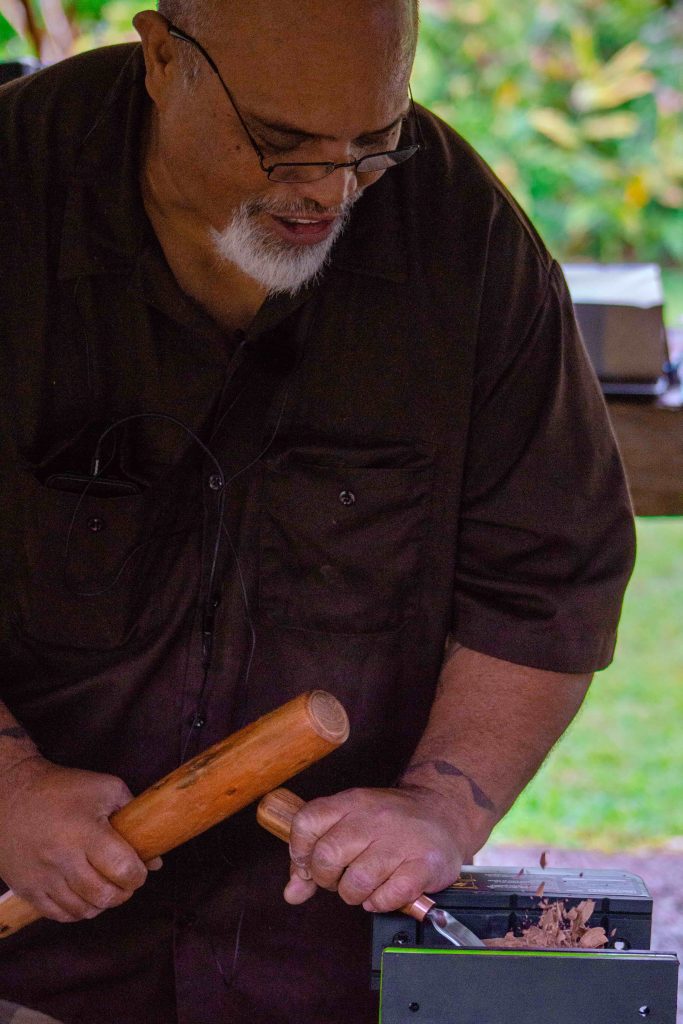09/18/23-KŪPUNA SHARE BIOCULTURAL KNOWLEDGE THROUGH NEW “ʻIKE KAIĀULU” VIDEO SERIES
Posted on Sep 18, 2023 in Aquatic Resources, Forestry & Wildlife, Main, Media, News Releases, slider| JOSH GREEN, M.D. GOVERNOR |
DAWN CHANG
CHAIRPERSON |
FOR IMMEDIATE RELEASE
September 18, 2023
KŪPUNA SHARE BIOCULTURAL KNOWLEDGE THROUGH NEW “ʻIKE KAIĀULU” VIDEO SERIES
The series aims to highlight the cultural context of Hawaiʻi’s natural resources
To view video please click on photo
(HONOLULU) – Natural resources are cultural resources in Hawaiʻi, and managing ecosystems requires an understanding of their cultural context. This is the guiding idea behind a new video series called “ʻIke Kaiāulu,” translated as “Community Knowledge,” produced by the Division of Forestry and Wildlife (DOFAW) at the Department of Land and Natural Resources (DLNR). While the series is ongoing and will expand over time, the first four installments were recently released and feature experts in the fields of la‘au lapa‘au (medicinal plant collection), wood carving, kilo limu (seaweed observation), and stewardship of special areas.
The featured experts include laʻau lapaʻau practitioner Roddy Akau, carver Nalu Andrade, Wally Ito of the ʻEwa Limu Project, and William Ailā, Jr., who in addition to being former chair of DLNR has had a longtime role in caring for the Kaʻena area of northwest Oʻahu. Though the interviewees are experts in different fields, their interviews share a common theme of optimism for the resilience of Hawaiʻi’s ecosystems in the face of a changing world, and a shared kuleana for seeing resources persist into the future.
Speaking on the topic of kilo limu, Ito said that the resource is “resilient if given the chance. The only question is what do we need to do to give it that chance?”
The theme of resilience was echoed by speakers not only regarding ecosystems, but for the continuation of Hawaiian cultural practices. “One of the most troublesome things to me is when people say, ‘Hawaiians used to do this,’” said Ailā. “Well, they’re still doing it. It’s occurring today. They still surf, they still fish, they still plant. It never really stopped.”
The responsibility to see that cultural knowledge is shared with future generations was another common theme. “I’m passing on a lot of knowledge,” said Akau. “It’s the students that keep me going.” Andrade, who provided carving workshops in partnership with the Kaulunani Urban and Community Forestry Program, shared this sentiment. In describing the purpose of carving māna ʻai (bowls given to weaning children), he likened sharing knowledge to the food shared in the bowl. “If you put this ʻike in this bowl, by teaching your child to be a good steward of the land, to be a nice person, you are putting ʻike in there so when the kid takes this, he turns it into māna.”
The first installments in the series were produced as a primary project of AmeriCorps member Claire Generous, who recently completed her service at DOFAW, via the local non-profit Kupu. The series is slated to expand in the future, with additional episodes seeking community knowledge focused on different types of cultural practices and based in new locations across Hawaiʻi.
# # #
RESOURCES
(All images/video courtesy: DLNR)
ʻIke Kaiāulu photographs: https://www.dropbox.com/sh/im2wblge8mo464r/AAA9UnvB0hg4aBA-TioLbvaWa?dl=0
ʻIke Kaiāulu videos: http://dlnr.hawaii.gov/dofaw/education/videos
Individual video links:
- Carving with Nalu Andrade: https://vimeo.com/853222612
- Kilo limu with Wally Ito: https://vimeo.com/853468676
- Caring for Kaʻena with William Aila: https://vimeo.com/853483645
- Laʻau lapāʻau with Roddy Akau: https://vimeo.com/853224867
Media Contact:
AJ McWhorter
Communications Specialist
Hawai‘i Department of Land and Natural Resources
[email protected]
